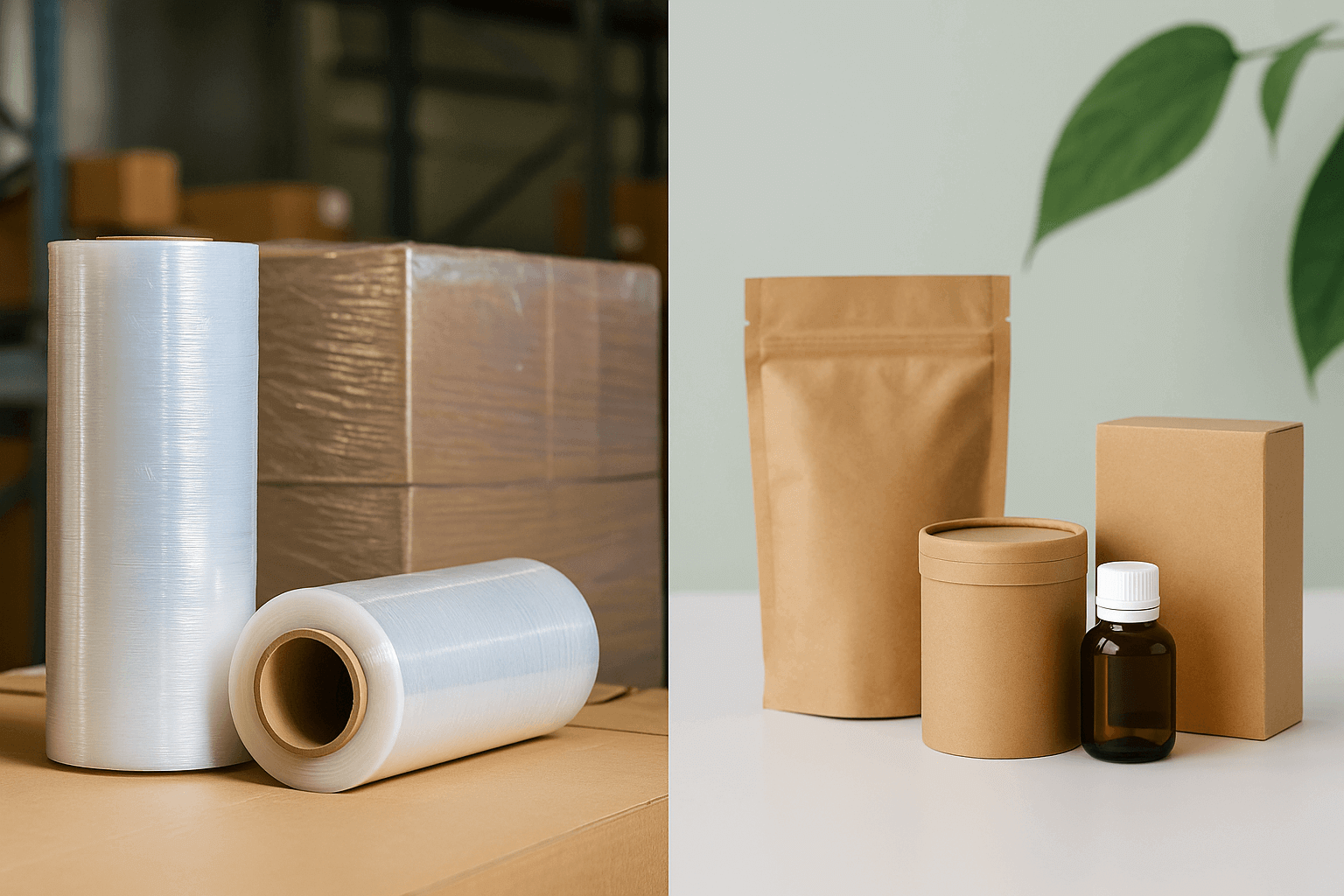Sustainability is transforming the way the world approaches packaging. Once driven purely by protection and cost, packaging is now expected to support environmental goals, reduce waste, and promote circularity—all while maintaining performance.
But what does sustainable packaging really mean? And how does it differ between industrial operations and the consumer market?
This article explores sustainable packaging from the inside out—starting at the factory floor and ending in the hands of everyday consumers. Whether you’re involved in manufacturing, supply chain operations, or product development, understanding the full lifecycle of sustainable packaging is key to making informed decisions.
What Is Sustainable Packaging?
Sustainable packaging refers to packaging that minimises its environmental impact throughout its entire lifecycle—from material sourcing to disposal. It aims to reduce harm to the environment without sacrificing product safety, efficiency, or usability.
Key characteristics of sustainable packaging include:
- Made from recycled or renewable materials
- Designed for reuse, recycling, or composting
- Manufactured using energy-efficient processes
- Supports a circular economy rather than linear waste generation
The core principle is simple: do more with less, and do it responsibly.
Sustainable Packaging in Industrial Settings
– The Role of Industrial Packaging
Industrial packaging includes materials used to transport and protect products during manufacturing, warehousing, and distribution. Examples include stretch film, shrink wrap, pallet covers, and bulk containers.
– Why It Matters
Industrial packaging often accounts for a significant portion of plastic usage, especially in logistics-heavy industries. Introducing sustainability at this level has wide-reaching environmental and operational benefits.
Common sustainable practices in industrial packaging:
- Switching to post-consumer recycled (PCR) materials
- Reducing packaging thickness without compromising strength
- Implementing load-optimised stretch films to minimise waste
- Using films with certified recycled content traceability
By optimising performance per gram of material, companies can reduce plastic use, lower emissions from transportation, and meet sustainability targets—without affecting product integrity.
Sustainable Packaging at the Consumer Level
– What is Consumer Packaging?
Consumer packaging is the outer layer of a product that the end user interacts with. This could be plastic pouches, bottles, paper boxes, or jars—designed not just for protection, but also for branding, convenience, and shelf appeal.
– The Sustainability Focus
Consumer awareness around plastic waste, microplastics, and landfill pollution has never been higher. As a result, businesses are being held accountable for how their packaging impacts the environment.
Strategies for sustainable consumer packaging:
- Use of recyclable mono-materials
- Development of refillable or reusable formats
- Clear labeling to support correct disposal
- Lighter and smaller packaging for reduced shipping emissions
From e-commerce packaging to supermarket shelves, consumer packaging plays a powerful role in both perception and environmental impact.
Closing the Loop: Circular Packaging Design
The ultimate goal in sustainable packaging is circularity—designing packaging that can be reused, remade, or recycled into new packaging, thus minimising waste and resource extraction.
Key principles of circular packaging:
- Reduce the amount of material used
- Redesign for recyclability
- Replace with lower-impact or bio-based alternatives
- Recover used materials for new applications
Packaging designed with these principles is not only more sustainable, but also more resilient to future regulatory, consumer, and supply chain pressures.
Comparing Industrial vs. Consumer Packaging in Sustainability
Feature | Industrial Packaging | Consumer Packaging |
Primary Function | Protection and transport | Branding, usability, and protection |
Volume | High (bulk distribution) | Individual units |
Common Materials | Stretch film, shrink wrap, pallet covers | Bottles, pouches, cartons, jars |
Sustainability Strategies | Recycled content, downgauging, reuse systems | Recyclability, compostability, minimalist design |
End-of-Life Impact | Managed in industrial waste streams | Dependent on consumer disposal behaviour |
Challenges and Considerations
Adopting sustainable packaging comes with a unique set of challenges:
- Cost and sourcing of sustainable materials
- Consistency and performance of recycled content
- Compatibility with existing machinery and logistics
- Regulatory compliance and evolving environmental standards
- Consumer education on proper disposal or reuse
Balancing sustainability with business efficiency requires a phased approach. Small improvements, multiplied across high-volume operations, can result in significant gains over time.
Real-World Innovations in Sustainable Packaging
The packaging industry continues to innovate with new solutions such as:
- High-performance PCR stretch films that maintain load containment while using recycled material
- Compostable films for perishables and single-use applications
- Smart packaging that tracks usage and sustainability metrics
- Water-based or bio-adhesive coatings to replace conventional plastics
These technologies aim to reduce reliance on virgin plastic, improve recyclability, and enable compliance with evolving sustainability certifications.
Steps Toward Sustainable Packaging Transformation
For companies ready to take the leap, here’s a practical path forward:
- Conduct a packaging audit: Understand where and how packaging is used across your business.
- Set measurable goals: Whether it’s reducing plastic weight by 20% or sourcing 50% recycled content, clarity drives action.
- Collaborate with responsible suppliers: Choose partners with third-party sustainability certifications like GRS or ISCC PLUS.
- Test before scaling: Pilot sustainable options on selected SKUs to monitor cost, performance, and reception.
- Educate and communicate: Inform internal teams and end-users on why the change matters—and how to use packaging responsibly.
Final Thoughts
Sustainable packaging isn’t about choosing between performance and the planet—it’s about designing systems that deliver both. From durable, efficient industrial packaging to more mindful consumer-facing solutions, every layer of packaging offers an opportunity to contribute to a greener, more responsible future.
Manufacturers that prioritise performance-backed sustainable innovation, like those producing high-quality stretch films with certified recycled content, are leading the way in making sustainability practical and scalable.
One such company committed to these goals is Thong Guan, whose sustainable product lines and global certifications reflect a serious, transparent approach to packaging that performs—while protecting the planet.

